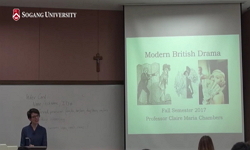<유토피아 세대: 20세기 문학의 정치적 지평>(2005)에서 니콜라스 브라운은 리얼리즘과 모더니즘의 차이를 “역사적 진리에 대한 책임”과 “역사적 의식에서 해방된 (혹은 소외된) 주체...
http://chineseinput.net/에서 pinyin(병음)방식으로 중국어를 변환할 수 있습니다.
변환된 중국어를 복사하여 사용하시면 됩니다.
- 中文 을 입력하시려면 zhongwen을 입력하시고 space를누르시면됩니다.
- 北京 을 입력하시려면 beijing을 입력하시고 space를 누르시면 됩니다.
https://www.riss.kr/link?id=A108966226
- 저자
- 발행기관
- 학술지명
- 권호사항
-
발행연도
2024
-
작성언어
-
-
주제어
리얼리즘 ; 모더니즘 ; 게오르그 루카치 ; 테오도어 아도르노 ; 프레드릭 제임슨 ; Realism ; Modernism ; Georg Lukács ; Theodor Adorno ; Fredric Jameson
-
KDC
840
-
등재정보
KCI등재
-
자료형태
학술저널
- 발행기관 URL
-
수록면
293-315(23쪽)
- 제공처
-
0
상세조회 -
0
다운로드
부가정보
국문 초록 (Abstract)
<유토피아 세대: 20세기 문학의 정치적 지평>(2005)에서 니콜라스 브라운은 리얼리즘과 모더니즘의 차이를 “역사적 진리에 대한 책임”과 “역사적 의식에서 해방된 (혹은 소외된) 주체성의 형식이 발생시킨 형식적 에너지에 대한 충실성 (182) 사이의 갈등으로 표현한다. 이러한 갈등 관계가 제기하는 여러 문제가 여전히 연구될 필요가 있는 것은, 전후 비평 이론의 발전 이후 다양한 비평적 사유가 출현했음에도 불구하고 리얼리즘과 모더니즘이 미학과 정치의 관계에 대해 긴밀하게 상호 연결된 정치, 철학적 태도에 끊임없이 영향을 끼쳐왔기 때문이다. 마르크스주의 사상가인 루카치, 아도르노, 제임슨은 형식과 내용의 변증법이라는 측면에서 리얼리즘과 모더니즘의 이분법을 탐구했다. 이들은 문학과 우리 사회의 근본적인 모순이 본질적으로 불가분의 관계를 맺고 있다는 점에는 공감했지만, 사회적 모순의 미적 표현에 대한 이론에서는 의견을 달리했으며 “사실적”이라는 것이 무엇인가 하는 중요한 질문에 대한 명확한 대답은 내어놓지 못했다. 이 논문에서는 리얼리즘-모더니즘 논쟁을 재검토하여 이 사상가들이 어떠한 방식으로 다음의 질문들에 답하는지 살펴보고자 한다. “리얼리즘의 형식과 그것의 특징은 무엇인가?,” “리얼리즘은 어떠한 방식으로 미적 형식의 역사를 수용하는가?” 브라운이 말하는 “형식적 에너지”는 “역사적 의식”으로부터 자유로워지려는 시도인가, 아니면 그 자체가 형식으로서 오히려 역사적 의식을 강조하는가? 마지막으로, 리얼리즘의 형식은 어떻게 정치적 행동을 가능하게 하는가? 이러한 질문은 모더니즘 이후 세계 주변부에서 리얼리즘의 미학적 선택이 끊임없이 재등장하고 있는 이유를 밝히는 데도 도움이 된다.
다국어 초록 (Multilingual Abstract)
In Utopian Generations: The Political Horizon of Twentieth-Century Literature (2005), Nicholas Brown remarks on the difference between realism and modernism as one that expresses a conflict between “a responsibility to historical truth” and “a f...
In Utopian Generations: The Political Horizon of Twentieth-Century Literature (2005), Nicholas Brown remarks on the difference between realism and modernism as one that expresses a conflict between “a responsibility to historical truth” and “a fidelity to the formal energies released by the emergence of a form of subjectivity liberated (or alienated) from historical consciousness” (182). This raises several issues that might be useful for us to develop since, despite the emergence of diverse critical lines of thought since the development of postwar critical theory, realism and modernism have continued to affect the intricately interconnected modes of philosophical and political attitudes towards the relation between aesthetics and politics. Marxist thinkers, Georg Lukács, Theodor Adorno, and Fredric Jameson, among others, explored the dichotomy of realism and modernism in terms of the dialectic of form and content. While they shared that there is an essentially inextricable relationship between literature and the underlying contradictions of our society, how they described the aesthetic expression of social contradictions was distinct, leaving the important question unanswered: “what does it mean to be ‘real’?” In this paper, I revisit the realism-modernism debate to explore this fundamental antagonism to see how these thinkers help clarify the following issues: what is realist form, and what are its features? How does realism negotiate the history of aesthetic forms? Are “formal energies,” as Brown puts it, by themselves an attempt to be free of “historical consciousness” or ones that, as form, highlight historical consciousness? And finally, how does realist form make political action possible? These questions also help us see what it means that the aesthetic choices of an older realism have been persistently replicated after modernism in the global periphery.
목차 (Table of Contents)
- Georg Lukács and the Dialectic of Form and Content
- Theodor Adorno and the Autonomy of Art
- Fredric Jameson and an Aesthetics of Failure
- Works Cited
- Georg Lukács and the Dialectic of Form and Content
- Theodor Adorno and the Autonomy of Art
- Fredric Jameson and an Aesthetics of Failure
- Works Cited
동일학술지(권/호) 다른 논문
-
9·11과 3·11, 혹은 문학의 그라운드 제로(ground zero)에서
- 한국비평이론학회
- 신형철(Hyoung Cheol Shin)
- 2024
- KCI등재
-
- 한국비평이론학회
- 윤영광(Young-gwang Yoon)
- 2024
- KCI등재
-
- 한국비평이론학회
- 이택광(Taek-Gwang Lee)
- 2024
- KCI등재
-
- 한국비평이론학회
- 정혜욱(Haeook Jeong)
- 2024
- KCI등재





 스콜라
스콜라






